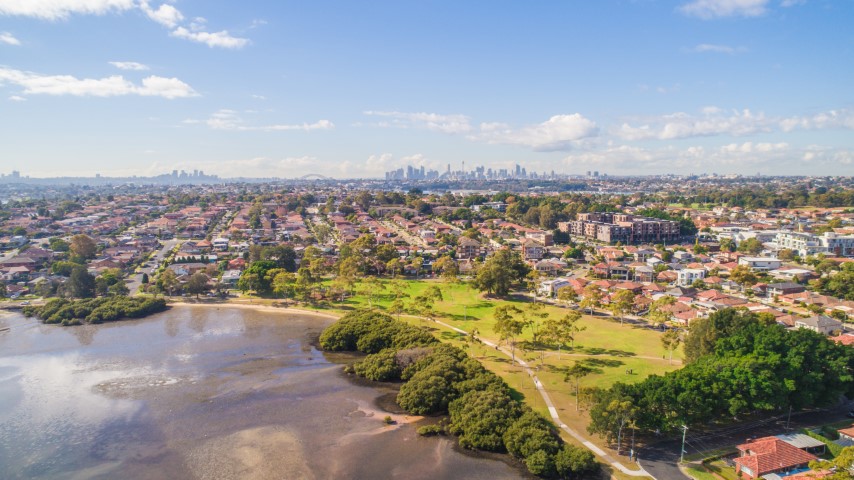- Residents
-
Community
-
Community services
-
Facilities & venues
-
Get involved
-
Parking & transport
-
 Help plan the City of Canada Bay's future and steer decisions on issues that matter to you.Share your feedback Collaborate Canada Bay
Help plan the City of Canada Bay's future and steer decisions on issues that matter to you.Share your feedback Collaborate Canada Bay
-
Community services
- Lifestyle
-
Business
- Development
- Council
What happens to my waste
Breadcrumb
- City of Canada Bay Council
- Residents
- Waste & recycling
- My bins
- What happens to my waste
Where does my recycling go?
Materials in recycling bins collected from City of Canada Bay households are sorted and turned into new products. Recycling collection vehicles collect from your household recycling bin and deliver all material to a Material Recovery Facility operated by VISY Recycling.
This facility sorts and separates the mixed materials from our bins into different material types. VISY Recycling use our kerbside recycling to manufacture products from paper, glass, cardboard, and some plastics, right here in Sydney! Other materials including steel and aluminium have strong market demand from other companies in NSW.
What is China National Sword, and how does this impact my recycling?
While recycling collected in the City continues to be turned into new products, the recycling industry in Australia and internationally underwent significant challenges and changes when in 2018, China implemented the National Sword policy, placing stringent restrictions on the import of recyclable materials. Other countries, including Malaysia and India are also placed restrictions on imports of international recycling. The impacts of these restrictions impacted the Australian recycling industry, which had previously sent nearly half of all recycling collected in Australia overseas for processing.
Recycling from City of Canada Bay households is still being recycled. But more needs to be done to strengthen Local processing infrastructure and markets have been strengthened and councils across Australia, State and Federal governments, and industry are working together with strategies to develop stronger markets for recycling. It is important that we all continue to recycle and reduce contamination in order to provide the best recycling products.
What can I do to help?
To help us recycle right, we ask residents to avoid single-use plastics and reuse where possible. We also ask residents to continue their great efforts with home recycling and to minimise the amount of contamination in their yellow bins.
After our collection vehicles empty your household red-lidded waste bin, all material is delivered to a transfer terminal in Clyde. From there, the material is transported via train to the Veolia Bioreactor landfill in Woodlawn (located between Canberra and Goulburn). The Woodlawn Bioreactor is designed with leading landfill technology to reduce any risk of emissions to air, land or water. The facility rapidly stabilises waste by accelerating the decomposition process, while also generating energy by harnessing methane gas created by the decomposing waste.
Waste is an ongoing issue for local, regional and state authorities in Australia. The City of Canada Bay aims to minimise the total volume of waste sent to landfill, and you can help us by making sure all items go in the right bin, looking for ways to re-use or renovate household goods, and shopping smart by thinking about replacement cost and life span of goods as well as upfront cost. Reducing waste can save money, conserve resources, save energy and water, and reduce pollution.
Household kerbside and bulk household organics are transported to the Veolia Resource Recovery Facility in Greenacre, Sydney for processing and recovery. Thanks to the excellent sorting and care taken by our residents, over 96 per cent of all material in kerbside organic bins is suitable for composting and being turned into a valuable compost product that can help gardeners and farmers.
The main items we find in garden bins that aren’t supposed to be there are rocks, dirt, and ceramics (such as broken pots or bricks). You can help us recover as much garden organics as possible by ensuring that the only materials in the green-lidded bin are garden organics such as prunings, leaves, grass clippings, twigs and branches.
All mattresses, white goods and garden organics materials collected in bulk household are sent for recycling. You can help make sure these items are recycled by placing them in neat separate piles.
Unfortunately, most other mixed material placed out with bulk household are sent to landfill. Mixed furniture and other material is transported to Veolia Environmental Solutions Resource Recovery facility located in Greenacre, Sydney where only around 15 per cent is able to be recovered for recycling.
If your items are suitable for reuse, then it’s far better to rehome them than to place them on the kerb for bulk household, where they may be damaged by weather. The City of Canada Bay has partnered with the Bower Reuse and Repair Centre to provide residents with a free collection and rehoming service. For more information, please visit the Bower Reuse and Repair Centre website.
You can also sell or give away items using online platforms like Gumtree, Freecycle or local Facebook groups.
